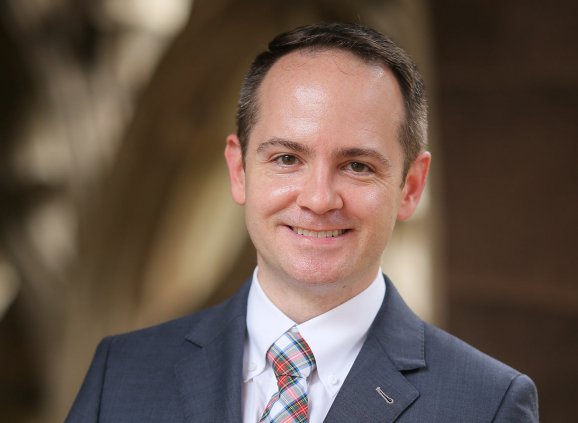
- Education Forums
To Catapult Our Praise

The Te Deum, an emphatic hymn of praise attributed to St. Ambrose, begins with these words:
We praise thee, O God : We acknowledge thee to be the Lord.
All the earth doth worship thee, the Father everlasting.
To thee all Angels cry aloud : the Heavens, and all the Powers therein.
To thee Cherubim and Seraphim continually do cry,
Holy, Holy, Holy : Lord God of Hosts;
Heaven and earth are full of the Majesty of thy glory.
It seems fitting that the Te Deum is traditionally sung on Trinity Sunday, our feast of title. At Trinity Church, we understand the importance of the worship of God. For us, as it has been for Christians in all times and places, music is one of the ways that we heighten our prayers of praise, whether it be our voices raised in a congregational hymn, the choir chanting a psalm, or the organ sounding a thunderous postlude. As we make music together, we become one with the fellowship of our universal church community, past and present, earthly and celestial.
Therefore, it behooves us to have the best possible worship toolbox of organ and acoustic at our disposal. We want to catapult our praise to the heavens rather than letting it limply flop into the pew cushion in front of us.
Our Trinity forbears showed that they understood the need for a fine pipe organ when they engaged the most significant and innovative American organ builder, Ernest M. Skinner, to build the Nave Organ (at the back of our church), which totals more than 4,000 pipes. Skinner’s instruments are known for their warm, broad tones that envelop a congregation with a fluffy pillow of support for communal song. Of his more than 750 organs, Skinner’s instrument at Trinity Church was considered one of his best. Even Louis Vierne, the famed blind organist of Notre Dame in Paris, was so impressed by Trinity’s organ that he wrote an effusive letter to Skinner, proposing that he build a similar instrument at Notre Dame.
Sadly, since its installation in 1926, the Nave Organ experienced significant tonal changes as organ building fads swept the country, particularly in the 60’s and 70’s. Modifications were made to louden and harshen the tone, attempting to overcome the poor acoustic created by our pew cushions and carpet. These materials essentially mute the organ and absorb our congregational singing. Surely you have felt, while attempting to join a hymn from your pew, that you are the only one singing. The organ also suffers in this acoustical environment, issuing a sound that seems to beat us down rather than inspire us to sing more heartily.
This Sunday, as we join the company of angels in our loud cries of praise, we bid farewell to the Nave Organ as it begins a year-long process to restore its warm, supportive tone. When the pipework returns in 2019, I’m certain that Trinity’s congregational praise will be reinvigorated, maybe even showing the Cherubim and Seraphim a thing or two! To honor Trinity Sunday and in thanksgiving for our glorious organ , the choirs will sing a setting of the Te Deum by Herbert Howells and the Messe Solonnelle by Louis Vierne, perhaps our instrument’s most significant fan. Come to church this Sunday and join us, along with the Heavens and all the Powers therein, in praise of God!
- January 2024
- December 2023
- November 2023
- October 2023
- September 2023
- June 2023
- May 2023
- April 2023
- March 2023
- February 2023
- January 2023
- December 2022
- November 2022
- October 2022
- June 2022
- May 2022
- April 2022
- March 2022
- February 2022
- January 2022
- November 2021
- October 2021
- September 2021
- August 2021
- July 2021
- June 2021
- May 2021
- April 2021
- March 2021
- February 2021
- January 2021
- December 2020
- November 2020
- October 2020
- September 2020
- August 2020
- July 2020
- March 2020
- February 2020
- January 2020
- December 2019
- November 2019
- October 2019
- September 2019
- August 2019
- July 2019
- June 2019
- May 2019
- April 2019
- March 2019
- February 2019
- January 2019
- December 2018
- November 2018
- October 2018
- September 2018
- August 2018
- July 2018
- June 2018
- May 2018
- April 2018
- March 2018
- February 2018
- January 2018
- December 2017
- November 2017
- October 2017
- September 2017
- July 2017
- May 2017
- April 2017
- March 2017
- February 2017
- January 2017
- December 2016
- November 2016
- October 2016
- September 2016
- August 2016
- May 2016
- April 2016
- March 2016
- February 2016
- January 2016
- December 2015
- November 2015
- October 2015
- October 2013
- September 2013
At "Educational Forums," enrich your spiritual journey by exploring our resources including videos of lectures, essays by priests, and other pieces about our faith, our church, and what it means to be a disciple of Jesus in the 21st century.


Comments